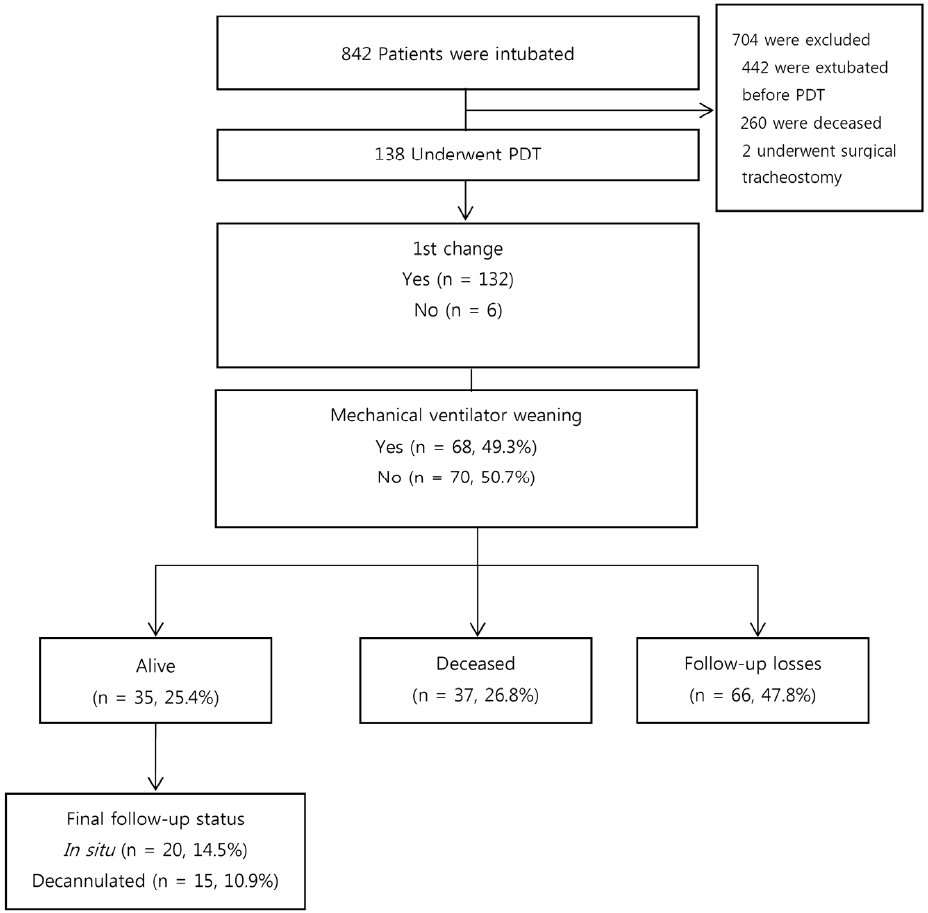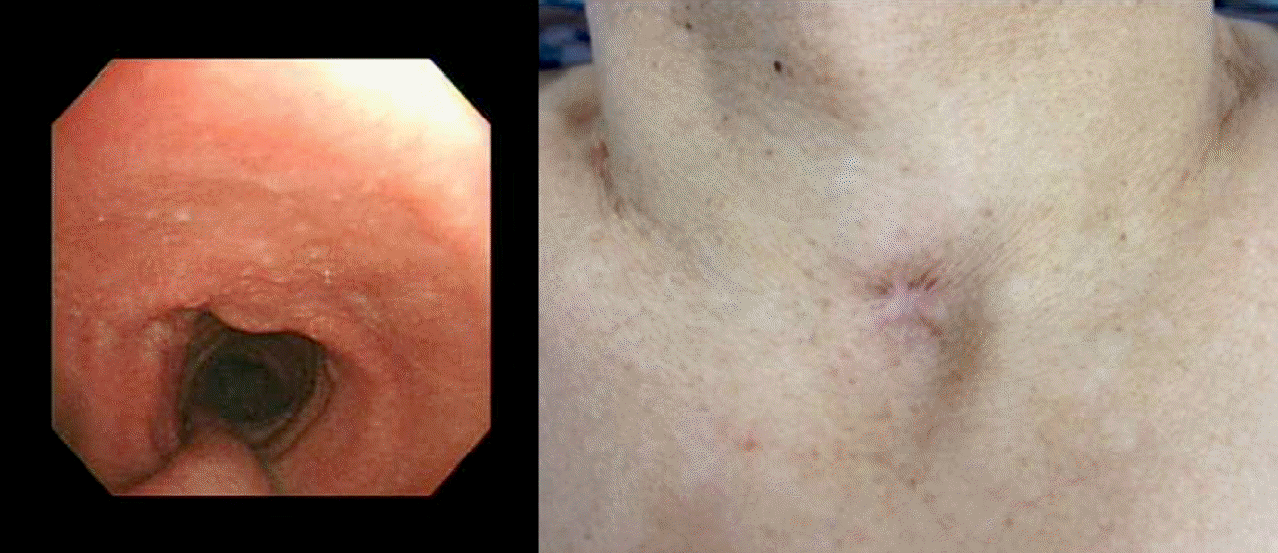1). Shelden CH, Pudenz RH, Freshwater DB, Crue BL. A new method for tracheotomy. J Neurosurg. 1955; 12:428–31.

2). Seldinger SI. Catheter replacement of the needle in percutaneous arteriography; a new technique. Acta radiol. 1953; 39:368–76.

3). Ciaglia P, Firsching R, Syniec C. Elective percutaneous dilatational tracheostomy. A new simple bedside procedure; preliminary report. Chest. 1985; 87:715–9.
4). Freeman BD, Isabella K, Cobb JP, Boyle WA 3rd, Schmieg RE Jr, Kolleff MH, et al. A prospective, randomized study comparing percutaneous with surgical tracheostomy in critically ill patients. Crit Care Med. 2001; 29:926–30.

5). Delaney A, Bagshaw SM, Nalos M. Percutaneous dilatational tracheostomy versus surgical tracheostomy in critically ill patients: a systematic review and meta-analysis. Crit Care. 2006; 10:R55.
6). Friedman Y, Fildes J, Mizock B, Samuel J, Patel S, Appavu S, et al. Comparison of percutaneous and surgical tracheostomies. Chest. 1996; 110:480–5.

7). Krishnan K, Elliot SC, Mallick A. The current practice of tracheostomy in the United Kingdom: a postal survey. Anaesthesia. 2005; 60:360–4.

8). Kluge S, Baumann HJ, Maier C, Klose H, Meyer A, Nierhaus A, et al. Tracheostomy in the intensive care unit: a nationwide survey. Anesth Analg. 2008; 107:1639–43.

9). Veenith T, Ganeshamoorthy S, Standley T, Carter J, Young P. Intensive care unit tracheostomy: a snapshot of UK practice. Int Arch Med. 2008; 1:21.

10). Abouzgheib W, Meena N, Jagtap P, Schorr C, Boujaoude Z, Bartter T. Percutaneous dilational tracheostomy in patients receiving antiplatelet therapy: is it safe? J Bronchology Interv Pulmonol. 2013; 20:322–5.
11). Massick DD, Powell DM, Price PD, Chang SL, Squires G, Forrest LA, et al. Quantification of the learning curve for percutaneous dilatational tracheotomy. Laryngoscope. 2000; 110(2 Pt 1):222–8.

12). Yoo H, Lim SY, Park CM, Suh GY, Jeon K. Safety and feasibility of percutaneous tracheostomy performed by medical intensivists. Korean J Crit Care Med. 2011; 26:261–6.

13). Lee D, Chung CR, Park SB, Ryu JA, Cho J, Yang JH, et al. Safety and Feasibility of Percutaneous Dilatational Tracheostomy Performed by Intensive Care Trainee. Korean J Crit Care Med. 2014; 29:64–9.

14). Grant CA, Dempsey G, Harrison J, Jones T. Tracheo-in-nominate artery fistula after percutaneous tracheostomy: three case reports and a clinical review. Br J Anaesth. 2006; 96:127–31.

15). Al-Ansari MA, Hijazi MH. Clinical review: percutaneous dilatational tracheostomy. Crit Care. 2006; 10:202.
16). Flint AC, Midde R, Rao VA, Lasman TE, Ho PT. Bedside ultrasound screening for pretracheal vascular structures may minimize the risks of percutaneous dilatational tracheostomy. Neurocrit Care. 2009; 11:372–6.

17). Rudas M, Seppelt I. Safety and efficacy of ultrasonography before and during percutaneous dilatational tracheostomy in adult patients: a systematic review. Crit Care Resusc. 2012; 14:297–301.
18). Al Dawood A, Haddad S, Arabi Y, Dabbagh O, Cook DJ. The safety of percutaneous tracheostomy in patients with coagulopathy or thrombocytopenia. Middle East J Anesthesiol. 2007; 19:37–49.
19). Kluge S, Meyer A, Kühnelt P, Baumann HJ, Kreymann G. Percutaneous tracheostomy is safe in patients with severe thrombocytopenia. Chest. 2004; 126:547–51.

20). Kost KM. Endoscopic percutaneous dilatational tracheotomy: a prospective evaluation of 500 consecutive cases. Laryngoscope. 2005; 115(10 Pt 2):1–30.





 PDF
PDF Citation
Citation Print
Print




 XML Download
XML Download